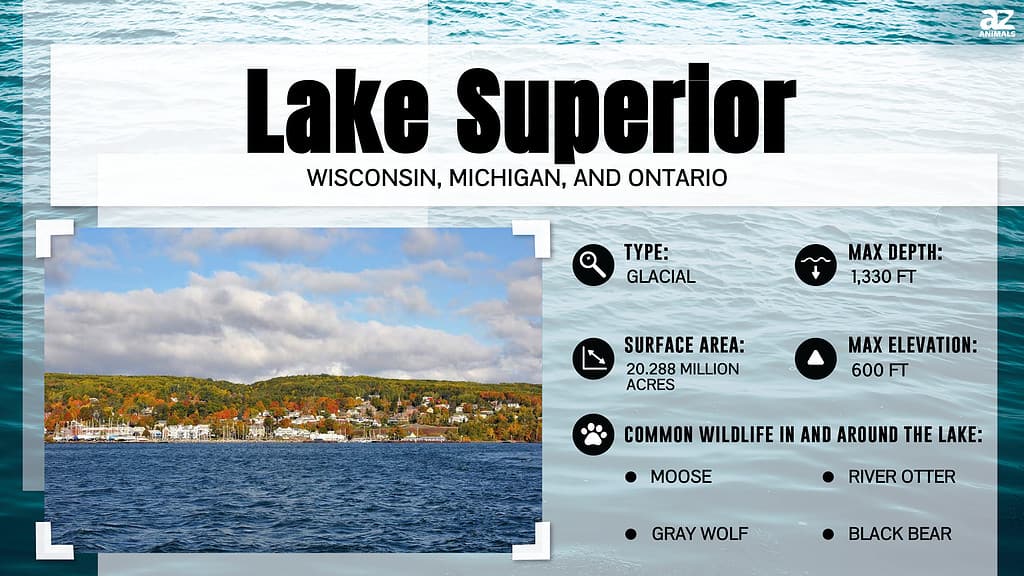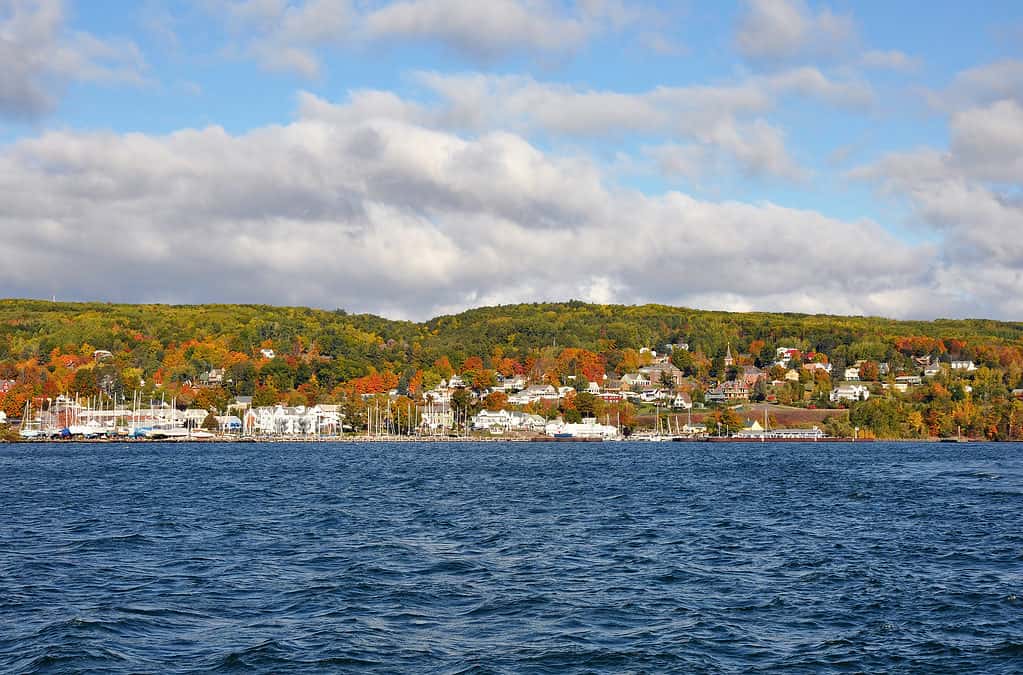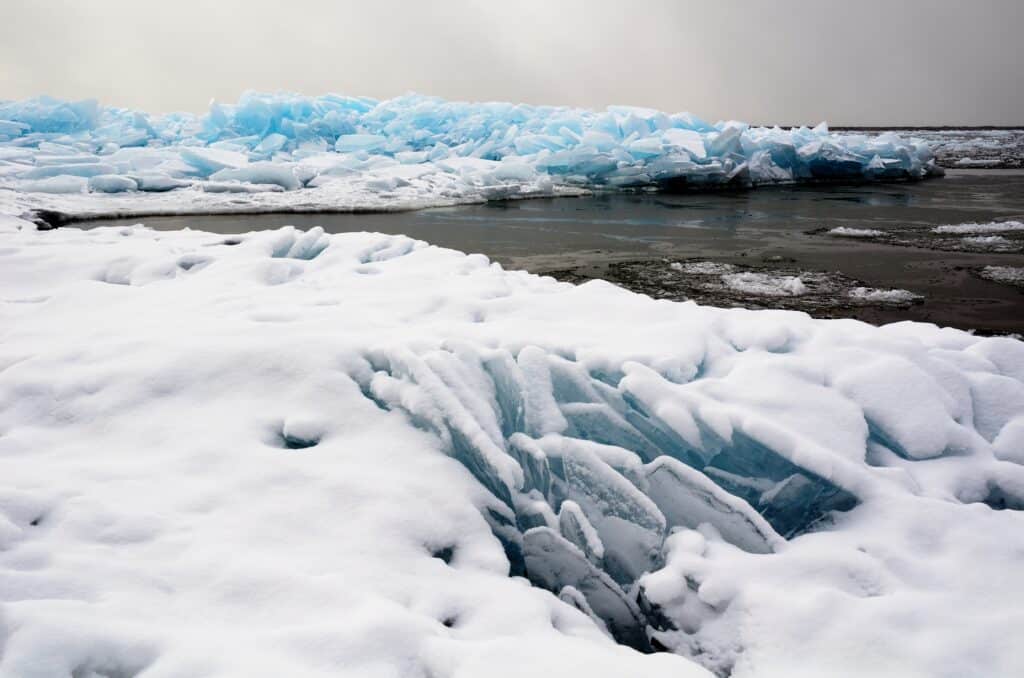
Lake Superior lives up to its name when it comes to the Great Lakes. Anchoring the acronym HOMES, each letter standing for one of the Great Lakes, Lake Superior is anything but last. It is the largest freshwater lake by surface area in the United States. The lake is 160 miles wide (257 km). The surface area is 31,700 square miles, one-third of the area of all five Great Lakes, which span 94,710 total square miles. Amazingly, it contains 10% of the earth’s fresh surface water. The lake’s volume is so large that it could contain all the other Great Lakes plus three other lakes the size of Lake Erie!
It is said to be the healthiest of all the Great Lakes. In fact, it is described as “the most oligotrophic lake in the world.” Oligotrophic means the lake is deficient in plant nutrients accompanied by an abundance of dissolved oxygen. Oligotrophic lakes are free of weeds or large algae blooms, making them clearer. However, this also means they don’t support large fish populations. However, this doesn’t mean they don’t have fish. Shaped by glaciers some 10,000 years ago, Lake Superior teems with life, featuring more than 80 species of fish.

Lake Superior is massive! This is a view of Bayfield, Wisconsin, as viewed from the lake in autumn.
©iStock.com/Todd Hogrefe
What Does Lake Superior Border?
Lake Superior gets its name from the French Lac Supérieur, meaning “Upper Lake.” It borders Ontario, Canada on both the east and north side, Minnesota on the west side, and Wisconsin and the Upper Peninsula of Michigan on the lake’s south side. The massive great lake discharges into Lake Huron on the eastern side via the St. Mary’s River.

The Great Lakes system is a series of interconnected freshwater lakes in Canada and the United States.
©iStock.com/PeterHermesFurian
Is it Safe to Swim in Lake Superior?
Most of the lake’s shoreline is rugged and inaccessible, with the land that surrounds it heavily forested. However, there are still wonderful places for swimmers to enjoy Midwest summers and dive in the cool waters. Many ask the question, “is the lake safe?” And the overall answer is yes.
It is the coldest (or the most refreshing) Great Lake, with an average temperature of 40° Fahrenheit or 4° Celsius. However, this lake hosts open-water races. One open water swim is from Bayfield to Madeline Island in Wisconsin. The race is 2.1 miles and is called “Point to La Pointe.” Though the race is safe, and over 650 swimmers participate, Lake Superior does have the fewest swimmers out of all the Great Lakes. Its remote location and temperature tend to keep swimmers out of the water.
How long does it take to swim across?
No one has swum across Lake Superior at its max width of 160 miles. However, multiple marathon swimmers have swum the 20 miles between Orienta, Wis. to Two Harbors, Minn. It took Victoria Keith 17 hours to finish in 1988. It should be noted that she swam all the Great Lakes Consecutively. Swimmer Paula Stephanson finished the feat in 13 hours and 15 minutes. Ultramarathon athlete Jim Dryer holds the record with the farthest distance swam in Lake Superior. He swam for 58.9 miles in 59 hours, 50 minutes in 2005.

The amount of snow in Minnesota depends on location. Regions along Lake Superior can reach 70 inches.
©Mark Herreid/Shutterstock.com
Size Facts for Lake Superior
Lake Superior is, well, superior when it comes to its size. A drive around the lake covers around 1,300 miles. There is also enough water in the massive lake to cover the entirety of North and South America in 12 inches of fresh lake water! Lake Superior has record land-breaking waves every now and again. People have recorded waves of over 40 feet during inclement weather. The lake’s water also changes in other ways when there are sudden changes in the Midwest winds or barometric pressure in the area. This produces seiches, which result in water levels rising and falling as much as 6 feet along Lake Superior’s shoreline. The shoreline stretches 2,726 miles, including islands. The lake is fed by over 200 rivers.
It is the largest freshwater lake in the world by surface area and the third largest by volume. However, it is the largest by volume in North America. It is an important part of Earth’s ecosystem. Its expansive shoreline is relatively undisturbed compared to those of the other Great Lakes. It has the longest undeveloped coastline of all the Great Lakes, with less than 5% developed. This wild shoreline is home to plant and animal species and helps keep the freshwater clean and drinkable. The Great Lake system is a source of drinking water for over 40 million people in the United States and Canada, with Lake Superior holding 10% of the freshwater.
Lake Superior also supports the shipping industry. Both domestic and international ships make use of the lake’s connection to the Atlantic Ocean. So, not only is the vibrant lake home to hundreds of wildlife species, but it is essential to the world’s drinking water, irrigation, and transportation. It is important to continue to protect this superior lake and keep it fresh and clean.
Size of the Great Lakes
| Great Lake | Length | Width |
|---|---|---|
| Huron | 206 mi / 332 km | 183 mi / 295 km |
| Ontario | 193 mi / 311 km | 53 mi / 85 km |
| Michigan | 307 mi / 494 km | 118 mi /190 km |
| Erie | 241 mi / 388 km | 57 mi / 92 km |
| Superior | 350 mi / 563 km | 160 mi / 257 km |
Where is Lake Superior located?
The lake sits on the northern edge of Wisconsin. It stretches north between the Upper Peninsula of Michigan to Ontario, Canada. The large lake also goes westward to the eastern edge of Minnesota.
Thank you for reading! Have some feedback for us? Contact the AZ Animals editorial team.








